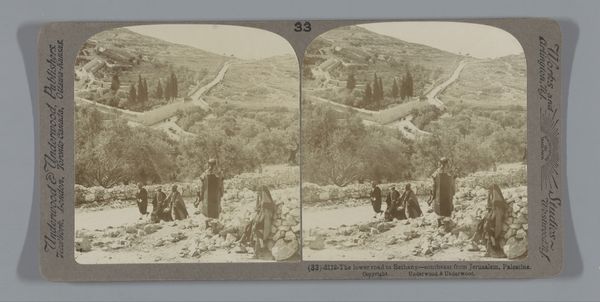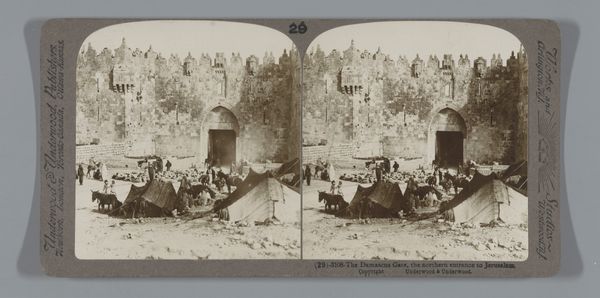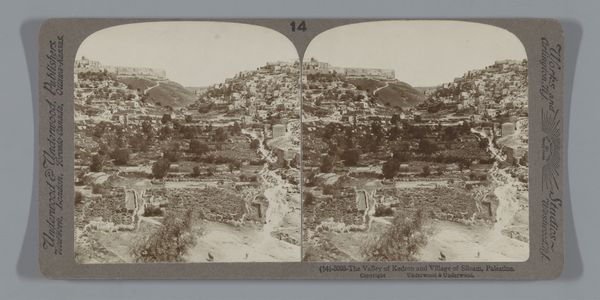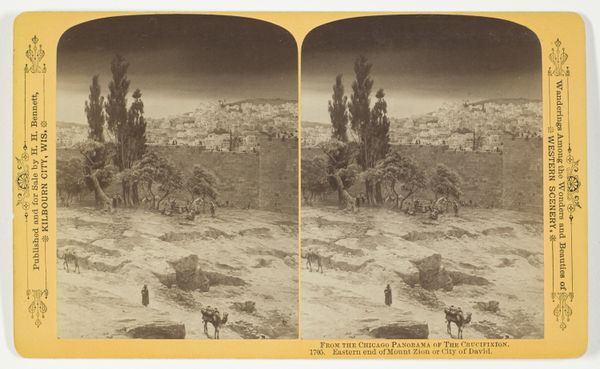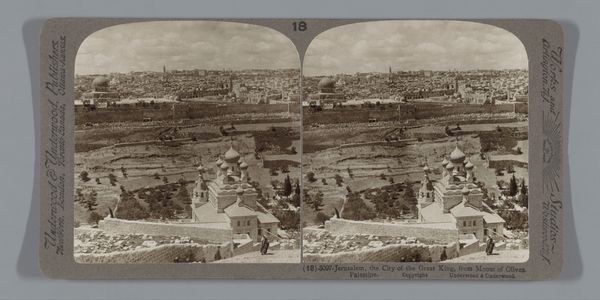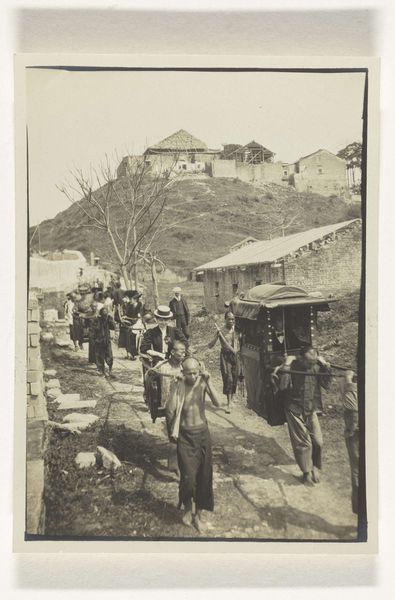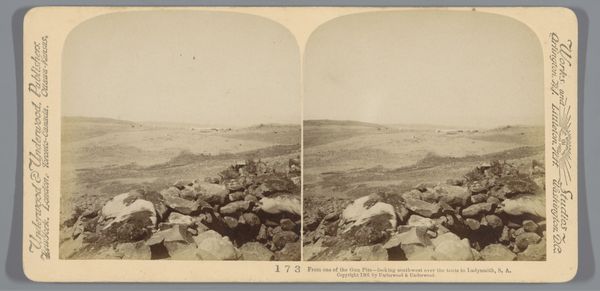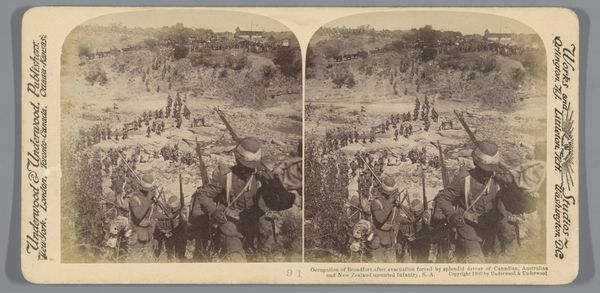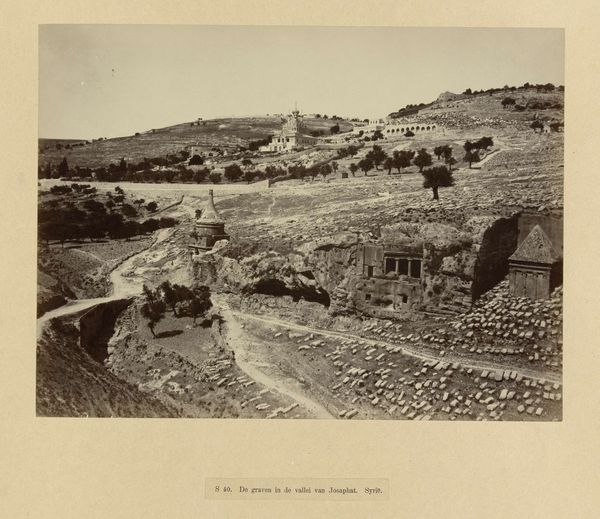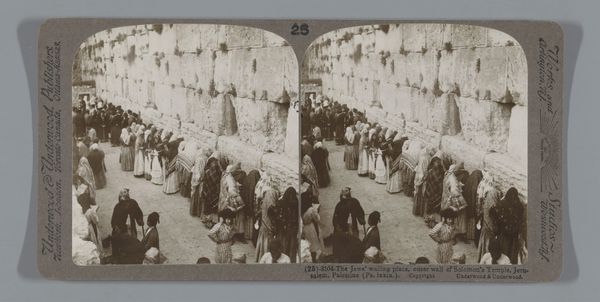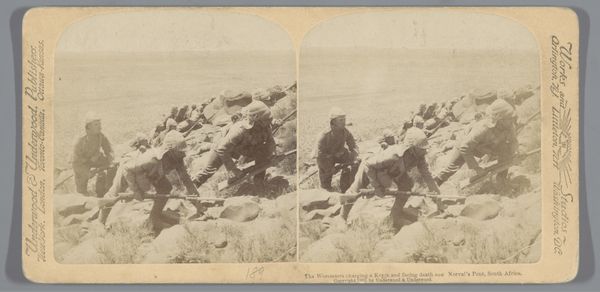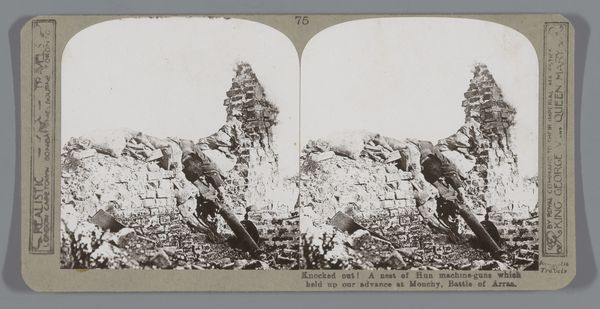
print, photography, gelatin-silver-print
# print
#
landscape
#
photography
#
orientalism
#
gelatin-silver-print
Dimensions: height 87 mm, width 177 mm
Copyright: Rijks Museum: Open Domain
Curator: Ah, here we have an early gelatin-silver print titled "Graven van de profeten in het Kidron-dal, nabij Jeruzalem," dating from around 1900-1905. What strikes you first? Editor: The muted tones create an almost ghostly atmosphere. It feels very textured, almost sculptural despite being a photograph. You can almost feel the rough stone. Curator: The artist, whose name is not known to us, has truly captured a certain depth. The composition is intriguing; the landscape, punctuated by these ancient tombs, recedes in clearly defined planes. What of the materiality of the gelatin silver process itself? Editor: The process lends itself so well to the subject matter; the limited tonal range heightens the starkness of the landscape. The method used is crucial to note when considering its context. How were images of the ‘Orient’ produced, distributed, and consumed? This photomechanical print no doubt circulated widely, and begs a deeper study into both the technology of image making and its use within larger geopolitical frameworks. Curator: Indeed, that speaks to the larger orientalist aesthetic pervasive at the time, casting the Holy Land as a distant, somewhat romanticized place. Note the placement of the figures, how they’re posed, their garments... Each detail constructs meaning. Editor: Exactly, these are not candid street shots. The placement feels deliberate, playing into preconceived notions the viewer would have had. The photographer certainly had some implicit bias. It becomes vital that we explore the conditions that created, moved, and reproduced these images. Curator: Yes, analyzing the cultural and commercial pathways that were at play as crucial for a robust picture, even with respect to such an aesthetic photograph. Editor: Considering both aesthetic qualities and the socio-historical reality provides an insight that one cannot produce alone, don’t you agree? Curator: Precisely. It is in understanding the intersection of structure and production that our understanding of these works finds its real reward.
Comments
No comments
Be the first to comment and join the conversation on the ultimate creative platform.

